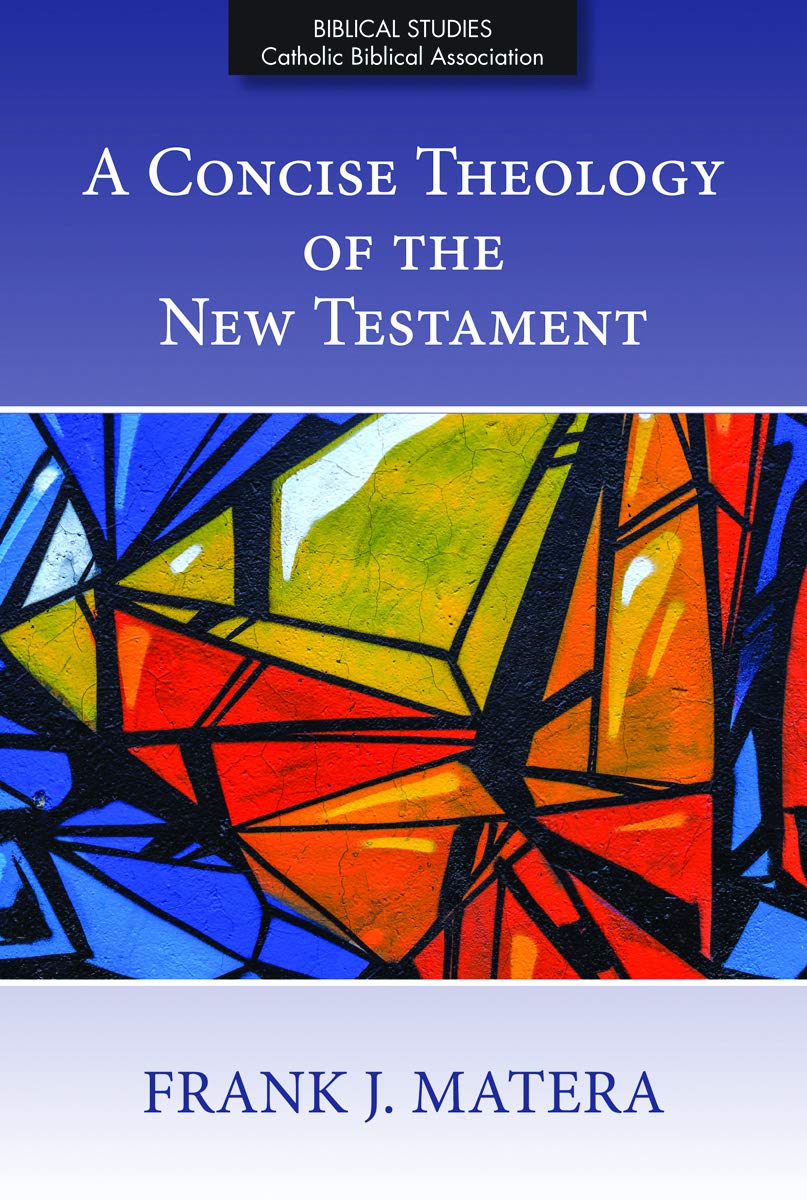A Book Review from Books At a Glance
by G. T. Tran
Summary of Content
Frank Matera’s A Concise Theology of the New Testament is the first installment in the Biblical Studies series from the Catholic Biblical Association of America. The series aims to “bridge the gap” between the church and the academy (ix). Contributors are thus instructed to write “in a style that is accessible to an educated, nonspecialized audience, without compromising academic integrity” (ix).
In the Preface, Matera articulates a fourfold purpose for the book: “(1) to provide a nontechnical overview of the discipline we call New Testament theology, (2) to summarize the diverse theologies in the writings of the New Testament, (3) to identify the overall theological vision of the New Testament, and (4) to explain the contribution that New Testament theology can make to the life of the Church, as well as the contribution that the life of the Church can make to it” (xi).
In the Introduction, Matera posits his understanding of NTT, contending that “the discipline of NTT investigates and clarifies the diverse theologies in the New Testament and the unifying theology of the New Testament” (3, emphases removed). Put another way, any NTT must address both the diversity and unity of the NT corpus (11).
Matera then explores the theology of the Synoptics (chap. 1), the Johannine literature (chap. 2), the Pauline literature (chap. 3), and the General Epistles (chap. 4)—which he terms “Diverse theological traditions.” Chaps. 5-6 deal with the unity of the NT. Matera argues, “Christ is the point of unity for the New Testament because the many theologies of the New Testament converge in him” (106).
The book wraps up with some reflections on NTT and the life of the church. Readers will also find a select bibliography at the end of the book which feature evangelical NTTs, such as those written by Craig L. Blomberg (2018), Donald Guthrie (1981), George E. Ladd (1974), I. Howard Marshall (2004), Thomas Schreiner (2008), and Frank Thielman (2005).
Here’s a glance at the table of contents:
- Introduction: What Is New Testament Theology?………………………..13pp
- Chapter One: The Synoptic Tradition…………………………………………23pp
- Chapter Two: The Johannine Tradition………………………………………12pp
- Chapter Three: The Pauline Tradition…………………………………………19pp
- Chapter Four: Diverse Theological Traditions………………………..……15pp
- Chapter Five: The External Unity of the New Testament………………12pp
- Chapter Six: The Internal Unity of the New Testament…………………12pp
- Conclusion: New Testament Theology and the Life of the Church…..8pp
Evaluation of Content
The book exhibits three strengths. First, Matera employs a clear writing style. He doesn’t beat around the bush, and readers never have to hunt for what he is saying (unlike many academics!). He states the distinct contribution of each NT book succinctly. For example, with respect to the theology of Matthew, Matera observes, “As with the Gospel according to Mark, the central theme of the Gospel according to Matthew is the proclamation of the kingdom. Matthew’s contribution to this theme is the righteousness the kingdom brings and requires” (27). As for the theology of Luke-Acts, Matera writes, “[I]n Jesus Christ, God fulfilled the promises made to Israel, and the fulfillment of these promises has resulted in a reversal of fortunes for many and an offer of salvation for all” (28, cf. 35-36). Further, those who are already familiar with Matera’s 2007 work may find this little book to be a helpful review (see New Testament Theology: Exploring Diversity and Unity [Louisville, KY: Westminster John Knox Press, 2007]).
Second, Matera often summarizes his discussion with bullet-points and charts. This strategy enhances comprehension and reiterates his concepts well. He doesn’t assume readers know everything, so one even finds the explanation for a common question regarding the difference between “Gospel” and “gospel” (15-16). Overall, the book is user-friendly and accessible for lay people. It is evident that Matera writes for the church.
Third, Matera rightly identifies Jesus as “the point of unity” for the NT (106). In this sense, his thesis is not drastically different from other evangelical NTTs. Schreiner, for example, contends, that “NT theology is God-focused, Christ-centered, and Spirit-saturated” (New Testament Theology: Magnifying God in Christ [Grand Rapids, MI: Baker Academic, 2008], 23, emphases added). Likewise, Thielman notes five concerns that unite all NT writings, two of which are “the significance of Jesus” and “faith as a response to Jesus” (Theology of the New Testament: A Canonical and Synthetic Approach [Grand Rapids, MI: Zondervan, 2005], 681).
My critique of the book is twofold. First, Matera distinguishes Paul’s theology from Pauline theology. This distinction originates from the debate surrounding Pauline authorship of Ephesians, Colossians, 2 Thessalonians, 1-2 Timothy, and Titus. As he explains, “If our task is to present Paul’s own theology, it is crucial to distinguish between those letters we are confident he wrote…and those that may have been written in his name by others….But if our task is to outline a Pauline theology, we must account for the theology in all the letters that the New Testament attributes to Paul, even if some were written by others in his name” (49-50, emphases original). In my opinion, the distinction is unnecessary if one holds to Pauline authorship of all the 13 letters, and good evidence exists for believing that.
Second, the book is too concise. Shorter versions of other NTTs typically range 200-300 pages (e.g., Schreiner, Magnifying God in Christ: A Summary of New Testament Theology [Grand Rapids, MI: Baker Academic, 2010]; Marshall, A Concise New Testament Theology [Downers Grove, IL: InterVarsity Press, 2008]), but Matera’s work is slightly over 100 pages. Thus, it sometimes leaves readers wishing for more explanation and substantiation.
All things considered, this little book may whet one’s appetite for Matera’s 2007 work. In fact, I look forward to reading that!
G. T. Tran
